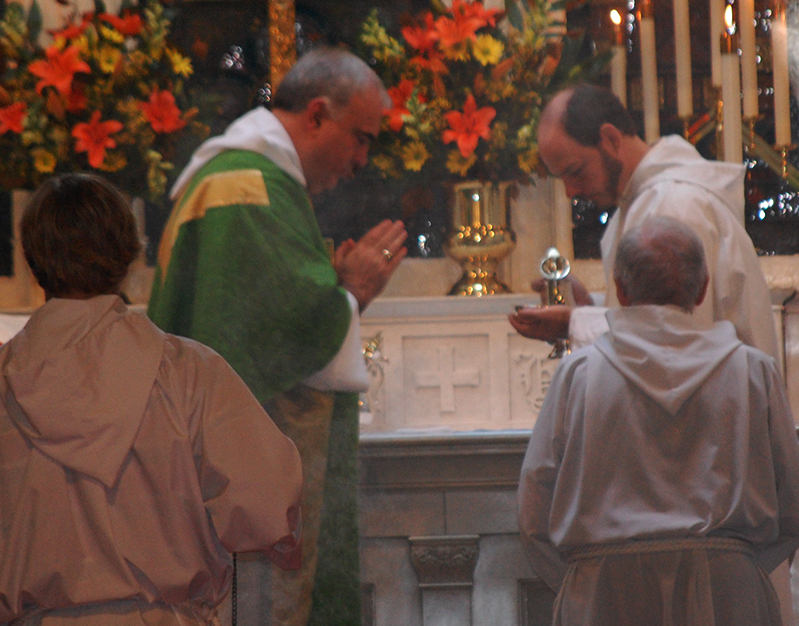What’s all this ceremony at the altar?
There’s a lot going on at the altar before and after the consecration that seems mystifying if you’re sitting in the nave. Most of the procedures have to do with traditional reverence.
The deacon or priest preparing the elements for communion first places the unconsecrated bread on a special silver plate called a paten and symbolically wipes the inside of the chalice (cup) with a napkin called a purificator. This is a ceremonial cleansing, since the Altar Guild already has thoroughly washed and polished the vessels. He pours wine and a few drops of water into the chalice and lifts that to the Lord in symbolic offering. Water is added because at the crucifixion both water and blood came from the spear wound in the Lord’s side.

The celebrant (the priest or bishop, leading the Eucharistic worship) next goes through a hand-washing ceremony called the lavabo. In ancient Hebrew worship, temple priests washed their hands after handling the sacrificial animals that were to be offered to God. The lavabo is a ceremonial carry-over of that tradition into Christian worship. The acolyte pours blessed water over the celebrant’s fingers into a lavabo bowl as the priest offers a prayer quietly for his own spiritual cleansing. He dries his hands on a lavabo towel, bows in appreciation to the acolyte, and receives an acknowledging bow from the acolyte.
After everyone has received the Sacrament, any of the Body of Christ that remains may be reserved in a special cabinet called the tabernacle (if located on the altar) or aumbry (if located in the wall next to the altar), for emergency communions (and Divine Presence), and any of the Blood of Christ that remains is immediately consumed by the celebrant and other ministers of the altar. The celebrant then performs the ablutions, or ceremonial cleansing of the vessel with water and a small amount of unconsecrated wine.
Adapted from The Anglican Digest, Eastertide 1984